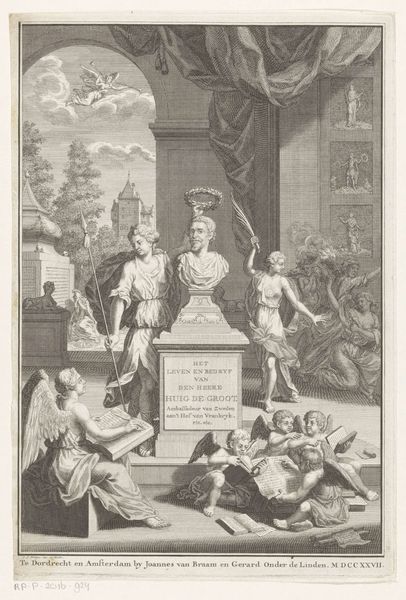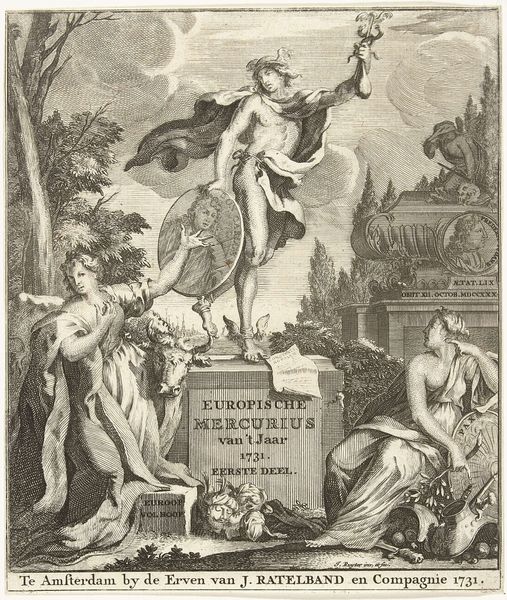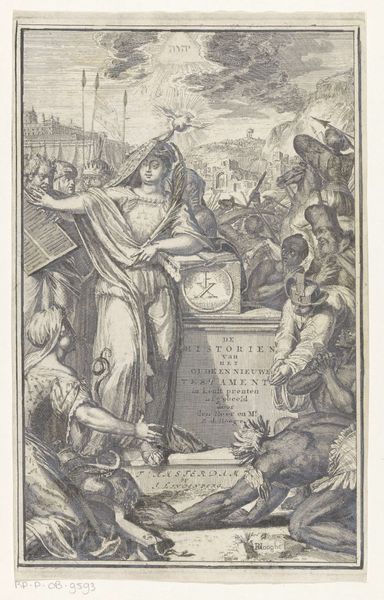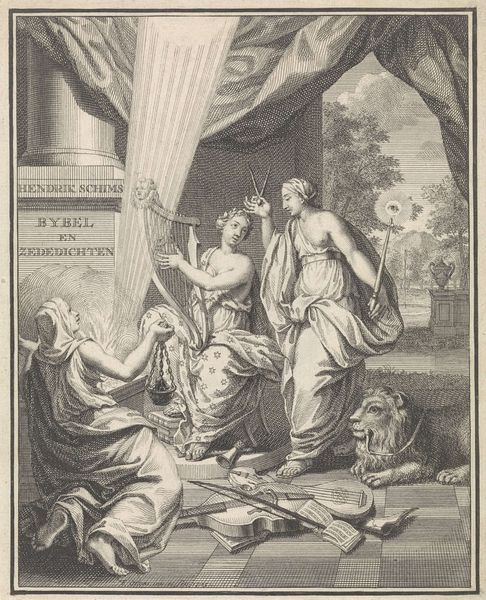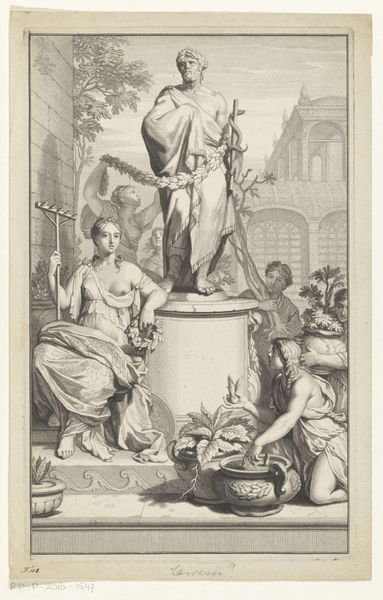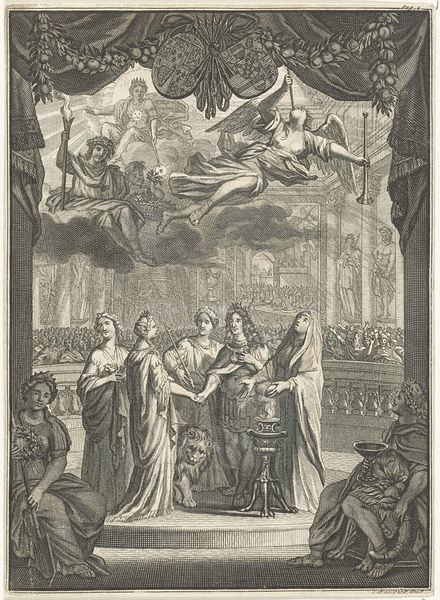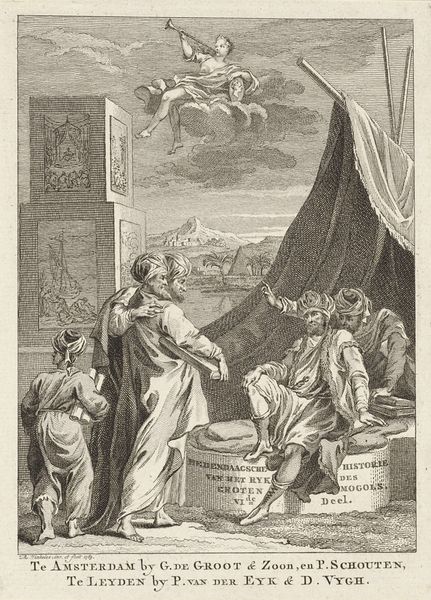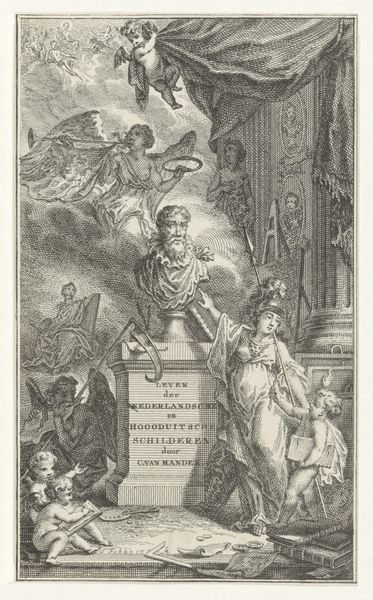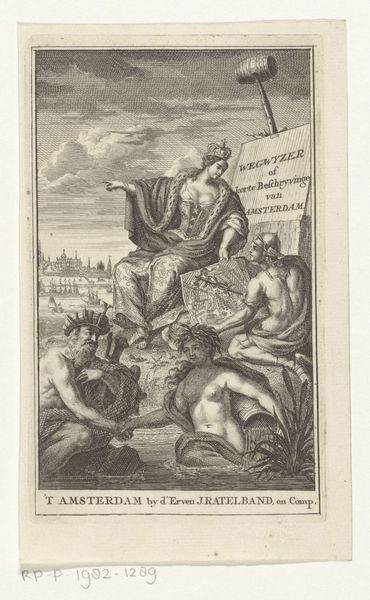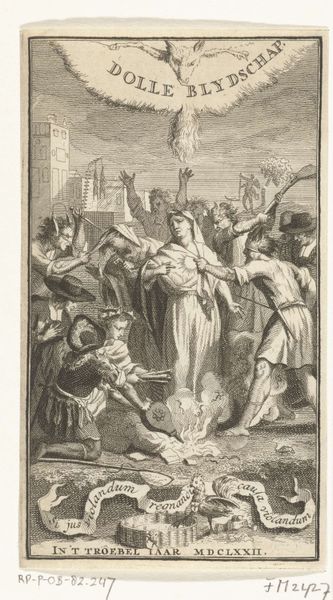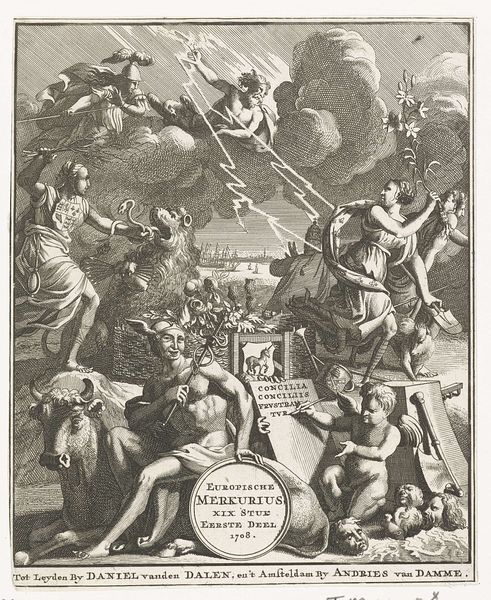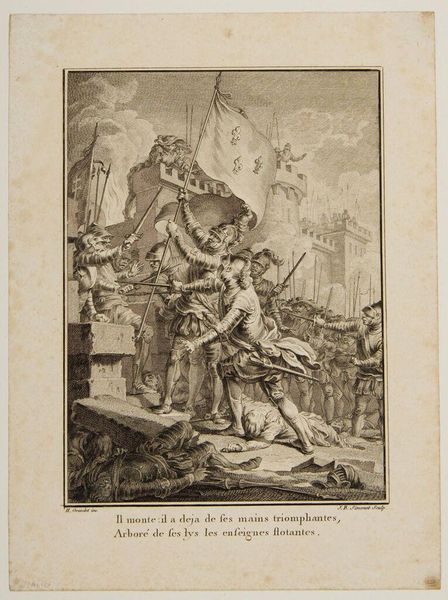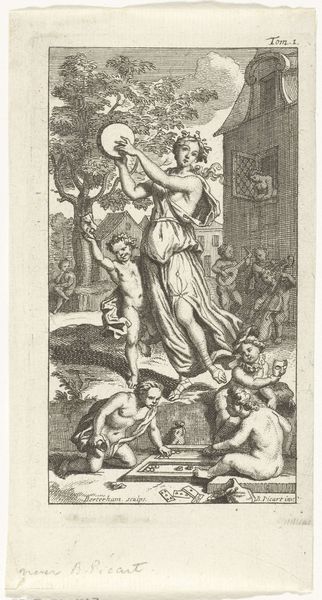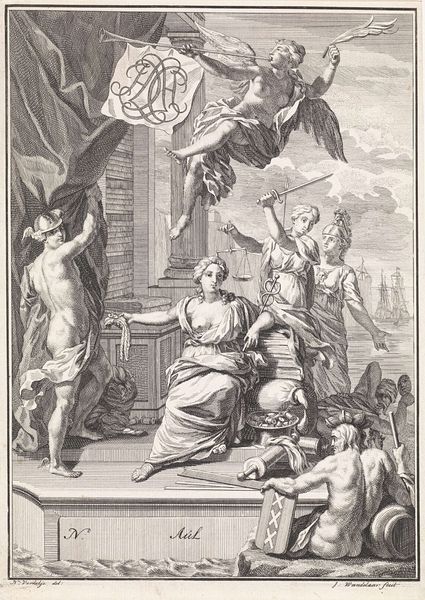
Titelpagina voor: 'Hedendaagsche Historie der Spanjaarden, deel 2', 1765 1765
0:00
0:00
Dimensions: height 169 mm, width 126 mm
Copyright: Rijks Museum: Open Domain
Curator: What strikes me immediately about this 1765 engraving is its intensity – it feels crowded, dramatic, and slightly unsettling. Like a tempestuous scene frozen in monochrome. Editor: It’s certainly evocative. This is the title page for the second volume of "Contemporary History of the Spanish," made by Reinier Vinkeles. We're looking at an allegory representing the narrative of Spain at the time. What we see are these baroque-style figures all swirling together. Curator: Baroque for sure – the dynamism, the chiaroscuro even in an engraving. Those enslaved figures, writhing and chained at the base... talk about a statement. But what is it actually saying about the Spanish? Editor: The standing female figure, she’s probably representing Spain, maybe as some sort of triumphant, if slightly melancholic, personification. She’s got a spear in one hand, an olive branch in the other, so peace and power maybe, balanced precariously. Behind her are all these other figures, presumably representing allies or other involved nations. And enslaved at her feet, those two chained figures, seem to symbolize subjugated peoples, and the chaos of war. Curator: Yes! And there's this odd mix of victory and tragedy playing out. Look at the mob raging behind her with swords in the air... There’s almost a bloodlust to it all. And then the distant ships at sea, all this tiny frantic detail makes it pulse. It definitely asks a lot of the viewer. Editor: Absolutely. And remember, this isn't just art; it's also propaganda. Printmaking was vital for spreading political ideas back then. So the engraver, Vinkeles, is using visual shorthand to create a very particular spin on Spain’s place in Europe and in global affairs at the time. It’s baroque visual rhetoric in action. Curator: I can see how it's more than just storytelling; it's an argument. A very layered argument. And maybe also an admission of guilt? Editor: I think it's fascinating how one image could condense a complex, controversial historical period and influence opinion using symbols, drama, and even visual tension. It’s a glimpse into the power of the printing press and the potent way art could shape public opinion during that era. Curator: It truly goes to show how seemingly straightforward historical illustrations often carry such an ocean of meaning within them. I leave this image contemplating about our understanding of history as viewers.
Comments
No comments
Be the first to comment and join the conversation on the ultimate creative platform.
